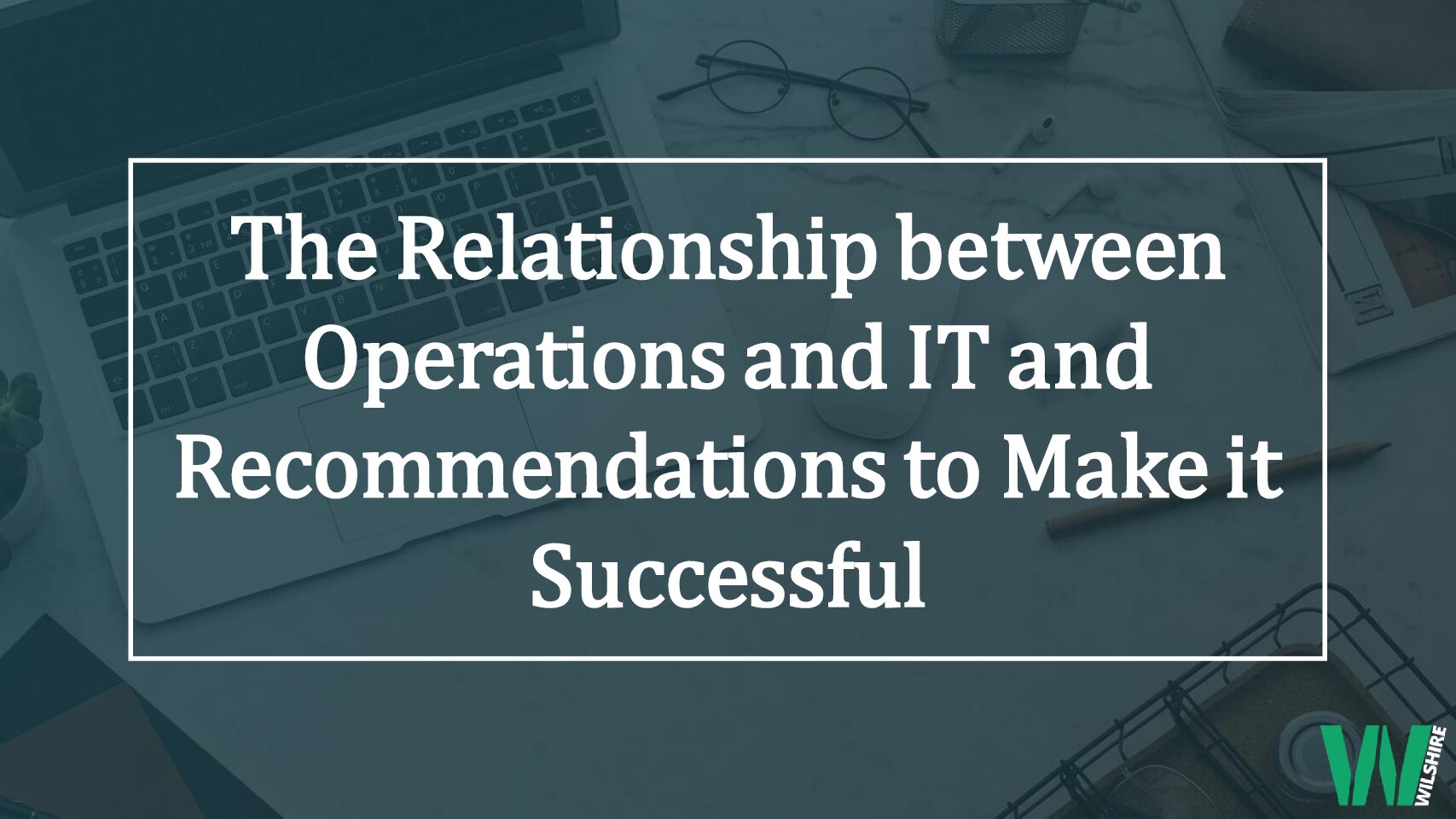Gretchen Case and I recently joined a two-part episode for the Wilshire RevCast around the relationship between Operations and IT. Even though I always sound different on recordings than I do in my head, it was nice to go back and listen to the discussion to review how that relationship works and how to foster the relationship.
For those that weren’t able to listen yet, the background for this episode came about from a project that Gretchen and I were working on together where I rolled my eyes based on an operational request that she made. With Gretchen’s Operations background and my IT background, even we were struggling in communicating in certain areas because of those backgrounds. With all that is going on today, with staffing shortages, remote work, and ongoing regulatory updates, having a strong relationship between Operations and IT will set up your organization for success.
Work Better Together
A few recommendations that came out of our discussion on the podcast are below:
Get Operations Certified and Proficient in their applications
- The more information that Operations has on how the system can or should function (which could be completely different than previous systems that they worked in), the better that they will be able to use the system.
Involve IT in the Operational Workflows
- Involve IT through shadowing staff or even attending operational steering meetings to get an understanding of what the concerns are and how that might be able.
Save time for one-on-one interactions between IT and Operations
- One-on-one interactions allow for both sides to ask the questions that they might be afraid to ask when managers/directors/ VPs are in the room.
- This also prevents some of the games of telephone that make people misinterpret tickets.
System Governance
- Hold regular meetings (weekly/biweekly) between Operations and IT to review tickets and priorities
- Use rubrics to help objectively review ticket priorities.
Involve Operations in all new feature reviews
- Operations and IT should work together to review any new features that come out to decide what is most important for the organization.
- Don’t always trust the recommendations for what not to use by the host system. Just because something wasn’t turned on originally so the new feature doesn’t apply, review if that feature should be turned on.
- Example: Estimates – a lot of organizations didn’t use the EMR estimates right away because it wasn’t powerful enough, so they used a 3rd party. Reviewing what the EMR can do with each release will allow you to potentially remove some 3rd parties that are in place.
Involve Operations in the testing process
- Involving operations is beneficial whether it is during an install to help get acquainted with the new system or after you are live to help catch any issues before they go into the system.
- Can use RACI documents for common processes.
Create documentation around what is changing and why
- All too often a team makes a change, then the involved people move on to different positions or leave the organization.
- A few years down the road, no one remembers why something changed, but it can cause errors or not do what is expected.
What are the types of things that you have seen that create a stellar relationship between Operations and IT? If you would like to learn more about continuing to grow the relationship between Operations and IT, contact us at The Wilshire Group. We are here to help!
